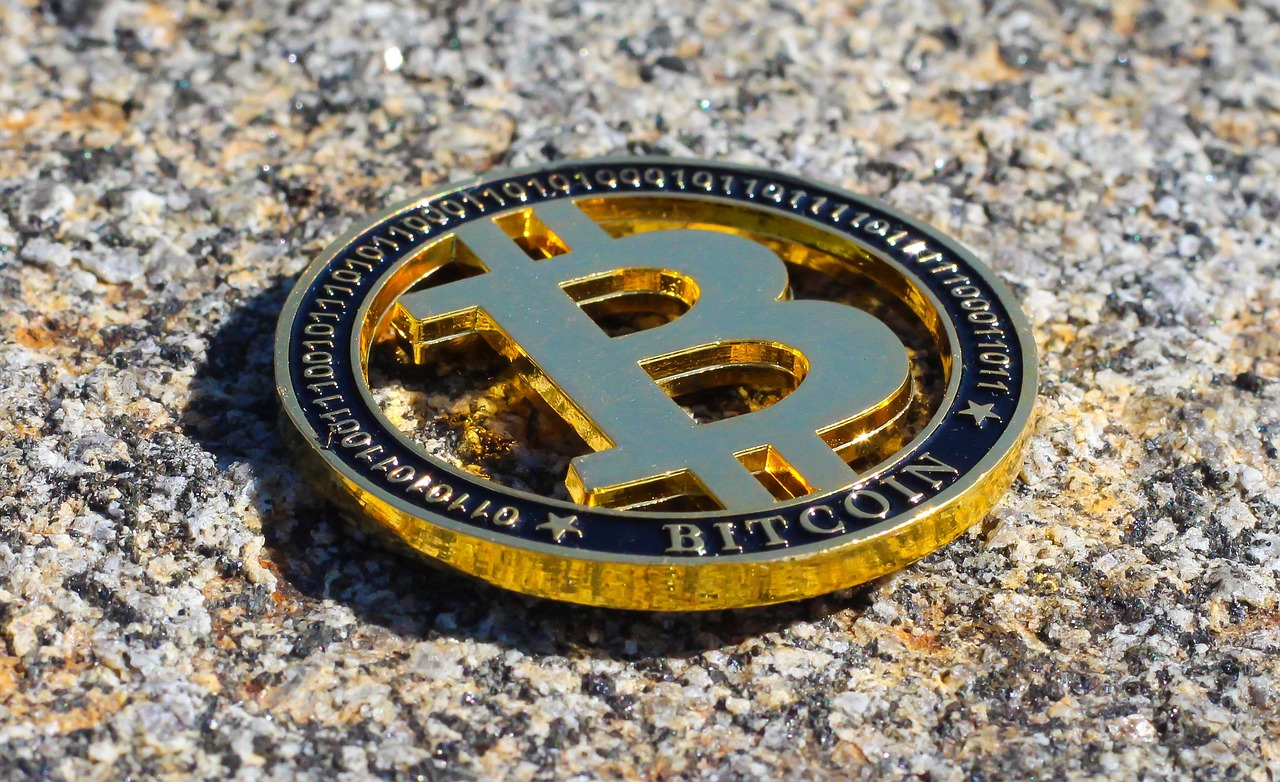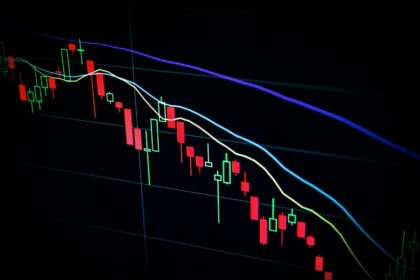Start by recognizing that tokenomics is a framework designed to explain how digital assets operate within a market. This model outlines the interaction between supply and demand, helping determine value and incentives for participants. By grasping these dynamics, users can better predict token behavior and make informed decisions.
The balance between circulating tokens (supply) and user interest (demand) directly influences price stability and growth potential. For example, limited supply paired with growing demand often leads to appreciation, while oversupply without sufficient demand causes depreciation. Understanding this relationship clarifies why certain tokens gain traction while others stagnate.
This economic structure also incorporates mechanisms like staking rewards, burning processes, and distribution schedules to regulate circulation and encourage engagement. Such components shape user behavior and network security, creating a self-sustaining ecosystem that aligns incentives across stakeholders.
Understanding the Fundamentals of Tokenomics in Cryptocurrency
Tokenomics represents the study of how a digital asset’s supply and demand influence its value within a blockchain ecosystem. At its core, this discipline assesses the quantitative and qualitative attributes of tokens, such as total supply, distribution mechanisms, and incentives that drive user engagement. Evaluating these factors helps investors and developers predict market behavior and design sustainable projects.
One critical aspect is token utility–how a token functions beyond mere trading. Tokens may grant access to services, enable governance participation, or act as rewards within decentralized applications. For example, Ethereum’s native token (ETH) serves not only as a medium of exchange but also fuels smart contract execution, illustrating multifaceted utility directly affecting demand.
Key Components Influencing Token Value
The balance between supply and demand plays an instrumental role in shaping token value. Limited supply with increasing demand generally leads to price appreciation, while inflationary models may dilute value unless offset by utility growth. Binance Coin (BNB), for instance, employs periodic token burns that reduce circulating supply, creating scarcity to support price stability.
Distribution strategy impacts market dynamics significantly. Initial coin offerings (ICOs), airdrops, or staking rewards determine how tokens reach holders and incentivize long-term participation. Projects like Polkadot use staking mechanisms where users lock tokens to secure network operations, aligning economic incentives with ecosystem health.
- Supply Controls: Fixed versus inflationary issuance models affect scarcity.
- Demand Drivers: Utility features that encourage holding or spending.
- Incentive Structures: Reward systems promoting active network involvement.
A practical example includes decentralized finance (DeFi) platforms offering yield farming; here, tokens represent shares in liquidity pools generating passive income. This utility attracts users seeking returns while maintaining token circulation necessary for platform functionality.
An accessible approach to grasping these principles involves comparing tokens to traditional economic concepts: think of supply limits as production caps on goods and utilities as product features driving consumer preference. Recognizing such parallels empowers newcomers to evaluate projects critically before engaging financially.
The evaluation process benefits from observing real-world scenarios where fluctuations in user activity correlate with changes in token metrics. Monitoring protocols like Uniswap reveals how trading volume spikes can increase fee-generated rewards for liquidity providers, reinforcing demand through tangible economic feedback loops.
This framework encourages learners to interpret data points thoughtfully rather than relying solely on speculative trends. By understanding the mechanisms governing creation, distribution, and consumption within decentralized networks, individuals build confidence to participate meaningfully in the evolving landscape of digital assets.
How Tokens Influence Value
The value of a token is primarily shaped by its supply and demand dynamics. A limited supply creates scarcity, which can increase perceived worth when demand grows. For example, Bitcoin’s capped supply of 21 million units contributes to its valuation, as users recognize that no new tokens beyond this limit will be created. Conversely, tokens with inflationary models–where supply expands over time–may face downward pressure on price unless matched by proportional increases in utility or demand.
Utility plays a critical role in determining a token’s market value. Tokens that provide access to services, governance rights, or staking rewards often sustain higher demand because holders derive direct benefits from their possession. For instance, Ethereum’s native token (ETH) is essential for transaction fees and decentralized application interaction within its network, which underpins continuous demand despite fluctuations in speculative interest.
Supply Models and Their Impact
Different token distribution models influence value through mechanisms such as inflation, deflation, or fixed supply caps. Inflationary tokens may incentivize spending or participation but risk devaluation if issuance outpaces adoption. Deflationary designs–such as token burning where a portion is permanently removed from circulation–can enhance scarcity and potentially boost price over time. Binance Coin (BNB), for example, employs quarterly burns reducing total supply, supporting upward value pressure aligned with platform growth.
Demand is often driven by the ecosystem built around the token. Projects focusing on community engagement and real-world application tend to generate sustainable interest. Consider utility tokens used for decentralized finance (DeFi) protocols: users require these tokens for lending, borrowing, or yield farming activities. This practical necessity fosters steady demand beyond speculative trading alone.
- Token staking: Encourages holding by rewarding participants with additional tokens or voting power.
- Governance rights: Grant influence over project decisions, increasing intrinsic value through user participation.
- Access to services: Enables usage of platforms or applications exclusive to token holders.
A well-designed economic framework integrates these factors into a coherent model balancing supply constraints with compelling utility and growing demand. Such alignment helps stabilize value and attract long-term investors rather than short-term speculators.
An informed understanding of these mechanisms enables better assessment of potential investment risks and opportunities within digital asset projects. Evaluating how each component interacts allows clearer insights into future value trajectories based on sound principles rather than speculation alone.
Token Supply and Scarcity
The total number of tokens available in a blockchain ecosystem directly influences its value and utility. A fixed supply model, such as Bitcoin’s capped 21 million tokens, creates a predictable scarcity that can drive demand by limiting availability. Conversely, inflationary models issue new tokens over time, which may affect purchasing power and user incentives differently. Understanding the specific token distribution schedule and maximum supply is critical for evaluating long-term potential and market behavior.
Scarcity arises not only from absolute limits but also from mechanisms that reduce circulating supply temporarily or permanently. Token burn events, where tokens are intentionally destroyed, serve to decrease supply and potentially increase value by intensifying rarity. For example, Binance Coin (BNB) regularly conducts burns based on trading volume, directly impacting its tokenomics model by tightening available supply while supporting platform growth.
Balancing Demand Through Supply Models
Supply dynamics must align with user demand to maintain economic equilibrium within decentralized networks. Inflationary systems like Ethereum’s pre-merge issuance encouraged network participation through rewards but risked diluting value if demand lagged behind supply growth. Post-merge adjustments reduced issuance rates, illustrating how modifying the token release pace affects scarcity perception and incentivizes holding rather than spending.
The interplay between circulating tokens and locked or staked assets also shapes effective scarcity. Projects implementing staking protocols often restrict large portions of their tokens from immediate use, reducing liquidity yet fostering network security and stability. This dual effect encourages engagement while influencing market dynamics–an essential consideration when analyzing any token’s economic framework.
Incentives for Token Holders
Holder incentives are fundamentally linked to the balance between demand and supply within a token’s economic framework. When tokens have clear utility–such as governance rights, staking rewards, or access to platform services–their demand increases, encouraging holders to retain and actively use them. This dynamic supports price stability and network health, as token holders become contributors rather than passive participants.
Understanding the incentive model requires analyzing how token supply mechanisms interact with holder behavior. For example, deflationary models that reduce circulating supply through token burns can increase scarcity, thus potentially driving up value for long-term holders. Conversely, inflationary models might offer continuous rewards but require careful calibration to avoid devaluing tokens.
Utility-Driven Demand and Holder Engagement
Tokens designed with specific utilities encourage sustained engagement by offering tangible benefits beyond speculative gains. Platforms like Ethereum utilize tokens (ETH) not only for transactions but also as collateral in decentralized finance (DeFi) applications. This dual role elevates demand because holders gain direct access to services such as lending, borrowing, or yield farming.
Similarly, governance tokens empower holders to influence protocol changes or development priorities. In projects like Compound or Uniswap, voting rights tied to token holdings incentivize users to maintain their positions actively. This participation ensures that stakeholders have skin in the game and promotes alignment between community interests and project evolution.
Supply Control Mechanisms Impacting Incentives
- Burning Protocols: Scheduled burns reduce total supply over time; Binance Coin (BNB) employs quarterly burns based on transaction volume, effectively increasing scarcity.
- Staking Rewards: Networks like Polkadot distribute new tokens as staking incentives, rewarding holders who lock assets for network security.
- Vesting Schedules: Gradual release of tokens prevents immediate sell-offs by early investors or team members, stabilizing market dynamics.
The interplay of these mechanisms creates an environment where holding is economically advantageous. For instance, staking not only secures network operations but also generates passive income streams proportional to locked amounts and duration.
Case Study: Incentive Alignment in Decentralized Protocols
This comparative analysis highlights how different incentive architectures motivate diverse holder behaviors but ultimately aim at fostering ecosystem growth and sustainability.
The Role of Behavioral Economics in Token Retention
Cognitive biases such as loss aversion play a significant role in holder decisions within digital asset ecosystems. By implementing lock-up periods or tiered reward systems, protocols leverage these psychological factors encouraging longer holding horizons. These strategies mitigate rapid sell pressure during market corrections and promote stable investor confidence.
A practical example includes vesting contracts combined with milestone-based unlocks prevalent in many initial coin offerings (ICOs). Such structures reward patience and align individual incentives with project maturity stages, gradually increasing token utility alongside platform development milestones.
Navigating Volatility Through Incentive Structures
The volatility inherent in decentralized networks demands robust incentive frameworks that protect both investors and operational integrity. Dynamic fee models–where transaction costs adjust based on network congestion–and adaptive reward algorithms exemplify technical solutions addressing this challenge.
An instance is the adoption of elastic supply models like Ampleforth’s rebasing mechanism which adjusts token quantity in wallets proportionally without diluting ownership percentage. This approach attempts to stabilize purchasing power despite fluctuating market sentiment while maintaining holder value propositions aligned with real usage metrics.
Role of Governance Tokens
Governance tokens serve as critical instruments within decentralized networks, granting holders the utility to influence key decisions such as protocol upgrades, fund allocations, or parameter adjustments. Unlike standard tokens primarily designed for transaction purposes, governance tokens embed voting power directly into their design, aligning stakeholder interests with network development. This voting mechanism operates as a decentralized decision model, ensuring that changes reflect collective consensus rather than centralized authority.
The distribution and circulation supply of governance tokens significantly impact their effectiveness and perceived value. A well-calibrated token distribution reduces the risk of concentration in few hands, preserving fairness in voting outcomes. Simultaneously, demand dynamics emerge from active participation incentives–users who engage in governance often receive rewards or increased influence proportional to their stake. This interplay between supply constraints and demand fosters sustainable engagement and strengthens the underlying economic framework of the platform.
Economic Models Behind Governance Tokens
Governance tokens operate within complex incentive structures designed to balance network security, user participation, and long-term growth. For example, some protocols incorporate token locking mechanisms where users must lock their holdings for a defined period to gain voting rights; this reduces circulating supply temporarily while increasing voter commitment. Another common approach involves quadratic voting models that weight votes to prevent dominance by large holders while encouraging broad community input.
A practical case is seen in decentralized autonomous organizations (DAOs) like MakerDAO, where MKR token holders vote on monetary policies affecting DAI stablecoin stability. The demand for MKR escalates with network usage because effective governance directly impacts system robustness and user trust. Here, governance tokens form an integral part of the platform’s sustainability by intertwining operational control with economic incentives.
Understanding governance tokens requires recognizing their dual role: as both functional tools for protocol management and economic assets subject to market forces. Their value proposition emerges not only from speculative interest but also from tangible utility tied to the decision-making process. Consequently, evaluating governance token projects involves analyzing token distribution methods, voter turnout rates, and the transparency of proposal execution–all critical parameters within this specialized segment of digital asset frameworks.
Impact of Token Distribution on Network Dynamics
Optimal token allocation models directly influence the balance between supply and demand, shaping the overall health and sustainability of a blockchain ecosystem. A thoughtfully designed distribution mechanism enhances token utility by ensuring tokens reach active participants who contribute value, rather than concentrating wealth in a few hands which can stifle circulation and reduce engagement.
For instance, vesting schedules combined with gradual release frameworks prevent sudden market dumps, stabilizing price volatility while maintaining consistent demand. Such models also encourage long-term commitment, aligning incentives across developers, users, and investors to support network growth.
Technical Insights and Future Directions
The architecture behind token distribution fundamentally affects economic incentives embedded within a decentralized platform. Here are key points that clarify its broader impact:
- Supply Control: Dynamic token unlocking protocols allow gradual expansion of circulating supply aligned with project milestones or user activity metrics, preventing inflationary shocks.
- Utility Maximization: Allocating tokens to roles that enhance protocol utility–such as validators or liquidity providers–increases network robustness and encourages meaningful participation.
- Demand Stimulation: Incentivized staking rewards or governance participation can create organic demand drivers beyond mere speculative interest.
- Mitigating Centralization Risks: Distributing tokens broadly and transparently reduces concentration risk, ensuring decision-making remains decentralized and resilient.
The future will likely see more adaptive distribution strategies powered by real-time data analytics and automated feedback loops. These approaches could tailor token flows based on usage patterns or external market conditions, optimizing both scarcity and accessibility simultaneously.
In conclusion, understanding how different allocation schemes interplay with supply-demand dynamics offers critical insight into designing sustainable digital asset frameworks. Recognizing this allows stakeholders to anticipate economic behavior within these ecosystems more accurately and build models fostering equitable growth alongside increased functional value.





